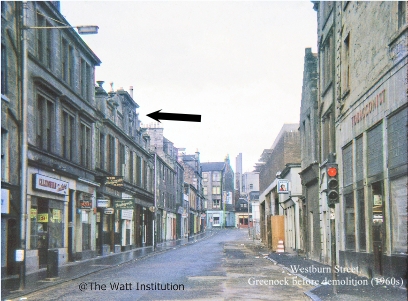There is a relic of the Spanish Armada at the McLean Museum in Greenock.
Sitting just outside the Museum entrance on Kelly Street is this old cannon. The Museum's online catalogue describes it as a "A 16th century Spanish Armada 12 pounder cannon from the Portencross wreck". The cannon is supposed to come from a Spanish ship which ended its days at Portencross near West Kilbride in North Ayrshire - just 23 miles south of Greenock. The name of the ship is unknown but it appears to have gone down just off shore from Portencross Castle. Another cannon was found and remains at Portencross.
.JPG) |
| Portencross Castle |
In 1588 when the Spanish fleet was routed by the English many ships trying to return to Spain were caught up in bad storms and blown way off course. A few ended up in Scotland. There's an excellent article about the defeat of the Spanish Armada on the Royal Museums Greenwich site (click to read).
How did this cannon end up in the Watt Institution, Greenock? It was donated to the museum in 1877 by Caird & Co, shipbuilders. When Greenock's main harbour was formed in 1710 the cannon was placed there by the magistrates of the town. In 1810 when the harbour was being improved, shipbuilder John Scott bought it and placed it in his shipyard. It was used to secure ships.

John Scott had a brass plate made for the cannon giving its full history - "The famous Spanish Armada sailed to conquer England in the year 1588, under the command of the Duke of Medina. The fleet was scattered in a tempest, and many of the ships were wrecked on the western islands of Scotland. This gun, saved from one of the wrecked ships, was brought here, and placed by the magistrates on the West Quay, in the year 1710, where it remained for one hundred years. Mr Scott having purchased all the materials of the old Quay when the harbour improvements were going on, this gun was removed here, not for the purpose of destroying ships, but for assisting vessels for repairing safely in and out of dock." "Building yard, Greenock 1843. Caliber of gun 12 pounder. Circumference at breech 3 feet 6 inches. Length of gun 8 feet 3 inches. Circumference at muzzle 2 feet 3 inches." There is now just a small descriptive plate attached to the cannon.
.JPG)
Such was its importance that in 1905 it was send from Greenock to be exhibited at the Naval, Shipping and Fisheries Exhibition at Earls Court, London.
Returned to Greenock, it still guards the entrance to the McLean Museum.
There are interesting links between Armada shipwrecks and Greenock. In 1680s the Earl of Argyll employed Archibald Miller a diver (salvor) from Greenock to investigate the wreck of an Armada ship which had sunk off Tobermory, Mull. Miller is recorded as finding several items for the Earl.
In 1874 another attempt was made to find any treasure left behind on the ship. This time Greenock submarine diver, Charles Gush, was employed by to find any remains of the ship at Tobermory. The Marquis of Lorne and his wife HRH Princess Louise were on board the steam yacht Colombia to view the proceedings, but there was an accident. Fortunately Charles Gush recovered.
In 1906 once again attempts were made to salvage any remains from the wreck at Tobermory. James Gush, submarine diver (son of Charles Gush) was employed by Captain William Burns (salvor) and the West of Scotland Syndicate, a group of businessmen intent on finding treasure. Some items were recovered and sold at auction - perhaps not the treasure they expected.
Since then many more expeditions have set out to try and find the "Tobermory Treasure". You will find a full and detailed account on the Canmore site (click to view) of the ship now thought to be the San Juan De Sicilia and the salvage operations undertaken over the centuries. It is a fascinating story.

.jpg)
.jpg)





.jpg)
.JPG)
.JPG)
.JPG)
.JPG)
.JPG)

.JPG)
.JPG)

.JPG)
.JPG)
.JPG)
.JPG)
.JPG)
.JPG)
.JPG)
.JPG)
.JPG)
.JPG)

.JPG)
.JPG)
.JPG)

.JPG)

.JPG)









.JPG)
.JPG)
.JPG)
.JPG)
.JPG)
.JPG)